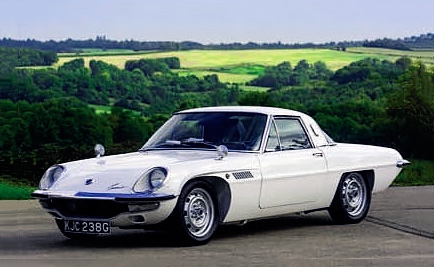
Wankels that worked. Fifty years of Mazda’s rotary engine. Felix Wankel’s innovative engine found its biggest fan in Japan with Mazda. 50 years after the firm’s first rotary, Neil Briscoe drives every key model. Photography Matt Vosper/Louise Siggers.
THE SPIN CYCLE Mazda’s rotary stars, from pioneer. Cosmo to last-of-the-line RX-8.
There are perhaps not many enduring engineering legacies that spring from tax breaks, but that was the impetus behind Mazda’s all but single-minded obsession with the rotary engine. We all know the tale of Felix Wankel: his, shall we say, ‘unfortunate’ political background and his development of an engine with a spinning rotor instead of up-and-down pistons. NSU put it into production first, with the Wankel Spider (although Škoda allegedly got there before NSU with some prototypes based on the 1000B), then Mazda came looking for a licence to use rotary technology.
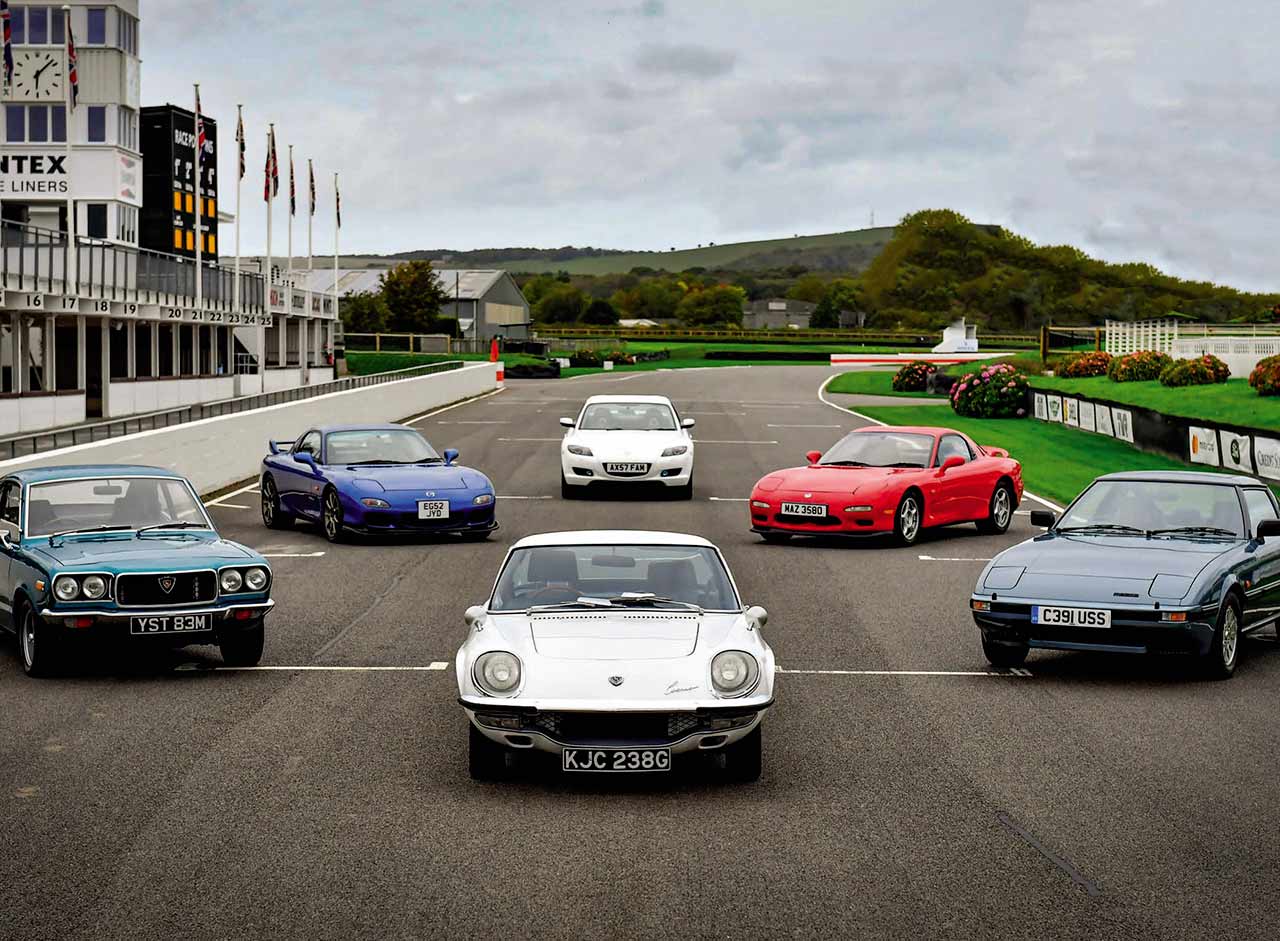
Was that because of an interest in quirky engineering, perhaps, a desire to find something different to match the burgeoning Honda? Partially, yes, but it was also about taxation. Mazda realised that a rotary engine could develop power far beyond the ability of a similarly sized conventional unit, and the Japanese tax laws at the time gave a break to cars with a cubic capacity of less than 1000cc.
And so the Cosmo was born, also badged as the 110S in some markets. Mazda’s inspiration for the name was the global obsession with the space age, while it was clear that the main influence for the car’s styling came from Alfa Romeo.
Well, at the front anyway: the faired-in headlights and low nose are pretty obviously an Alfa Duetto as seen through a Japanese lens. As you move towards the back, however, there’s also a bit of American style, too, with more than a touch of the 1966 Ford Thunderbird, especially with the squared-off fixed-head roofline.
Mazda found that it suffered from the same problems as NSU when it came to the rotor scratching up the inside of the combustion chamber, and wearing down its tips. Engineers reportedly tried every material they could think of – up to and including animal bone – to seal the edges of the rotor. Finally, chief engineer Kenichi Yamamoto exhorted his team that “from now on, the rotary engine must be on your minds at all times, whether you are sleeping or awake” and they got it working, with a mixture of aluminium and carbon-composite, as well as modifications to the shape of the rotor tips.
Fifty years on, this one still works: an original 1968 Cosmo 110S (it’s a Series 2 car with 128bhp from the twin-rotor 982cc engine, and a 15in-longer wheelbase) that is one of only a handful of running examples in the UK at the moment. It’s low and delicate, so it takes some breathing in for me to squeeze behind the exquisite Nardi wood-rimmed wheel. Whatever I do, my head is crammed up against the rooflining.
As on the outside, so the Cosmo’s interior looks very Italianate, with a vertical dash stuffed with white-on-black dials, plenty of rocker and toggle switches, and an adorable little adjustable map light atop the passenger’s right knee.
At half a century old, the Cosmo is reluctant to start but, once it gets going, there’s that eerie smoothness from the engine that has always been a characteristic of a good Wankel and, with 128bhp on tap, you’re well ahead of any other contemporary 1-litre engine. The four-speed gearbox is a little vague and needs a firm hand to find third at times but, once rolling, the Cosmo has truly remarkable performance for a car with this sort of displacement. A sub-one-tonne weight means that the rotary’s signature lack of torque is less of an issue, and it’s quite easy to flow along with modern traffic – provided that you remember to leave some allowance for 1960s brakes and heavy, slow ’60s steering.
Let’s fast-forward 40 years at this point, to the other white car in our convoy assembled by Mazda UK to mark the golden anniversary of its rotaries: the 2007 RX-8. This particular example is a 40th-anniversary special edition, so came with some extra toys and nicer seats than the standard model, but the thread that ties it to the Cosmo lies beneath the bonnet. Separated from the 110S by four decades of development and effort, the RX-8’s 1.3-litre rotary, despite it developing knocking on twice the Cosmo’s power (217bhp to be exact), really does feel like a later version of that original 10A unit. There’s the same steady building of power, entirely proportionate with revs; the same smoothness and lack of vibration; the same sensation of it being less like a normal combustion engine, and more like an odd development of a turbine.
Of course, the RX-8 is a far more practical machine than the two-seater Cosmo (there is usable space in the back, and those extra rear-hinged doors really do help), and you could conceivably use one today as your daily driver, assuming that you’re happy to accept that you’ll be lucky to see a regular 30mpg. It drives beautifully too, with firm, well-weighted steering and a comfortable ride over the lumps and bumps of the Sussex lanes around the Goodwood circuit.
An RX-8 can be rather sideways in the wet – probably a consequence of sharing its understructure with the mid-2000s MX-5 – but in the company we’re keeping today, it’s this four-door coupé with its naturally aspirated rotary engine that is actually the sensible one.
Especially when compared with the little RX-3. A follow-up to Mazda’s Luce Coupé (the successor to the Cosmo), the RX-3 was based on the Gran Familia range, a rival to Toyota’s original Corolla and a predecessor to the Mazda 323 hatchback. Also known as the Savanna Coupé in some markets, the RX-3 took the bland shape of the Familia and added muscle – or, indeed, muscle car, because there is more than a touch of the shrunken Chevelle about the blue-green two-door.
This example is far from standard under the skin, however, featuring a 12A engine from a later RX-7 along with that car’s five-speed gearbox.
The wheels and tyres are clearly a lower profile than stock as well: when presented with the prospect of stripping it down and returning it to standard spec, Jota Sport – the Le Mans and WEC racing team that cares for Mazda’s historic fleet when it’s not running the Jackie Chan Racing LMP2 car – decided that it was just too much fun as it is.
They’re not wrong. The RX-3 scored a lot of Mazda’s early on-track successes (following a single outing in the 1968 Marathon de la Route at the Nürburgring for a Cosmo, which finished fourth with an all-Belgian crew) with wins in the Fuji 500 and regular door-rubbing contests with various Nissan Skylines, especially in Australia. The RX-3’s class successes actually started something of a cult following for Mazda rotaries in Australia, which endures to this day.
Theoretically, this car has the same power output as the earliest Cosmo, but you could have fooled us: it feels very highly strung, and doesn’t so much breathe as bellow through a big-bore exhaust. It feels properly quick, too, at least up to about 5000rpm where, oddly for a rotary, power seems to tail off a little. You don’t mind, though, because by then you’re deafened and a little giddy from the fumes. Wrestling the little coupé around rural Sussex is made a touch challenging by steering that has a dead spot the size of a battle-cruiser around the straight-ahead and brakes that require a serious shove and a mumbled prayer if you’re going to stop in time. But fun? Oh yes, big fun, not least because of the vocal range of the engine, the licks of flame down the exhaust system that trigger a Vickers Gun-worth of overrun pops, and a sense of tail-happiness that never quite trips over into instability. Plus, it just looks so cool – the 1970s having been rehabilitated from their position as the decade without style, the RX-3’s mini-me Starsky & Hutch vibe is hugely appealing.
It’s not the star of this particular show, however. That role has been landed by the MkI RX-7. Designed in 1978 by Matasaburo Maeda (whose son Ikuo would go on to style the RX-8, so the family resemblance is more than steel-deep), the influence of the Porsche 924 is clear in its sharp nose, pop-up lights, and the big wraparound glass tailgate. It’s smaller than the Porsche, though. Again, that’s thanks to Japanese tax laws – by keeping the width down, and containing the engine below 1.5 litres (the 12A twin-chamber displaces just 1146cc) this was a sports coupé with a fiscal advantage.
This particular example is truly remarkable, not for its performance or its looks (although neither is less than lovely) but for its condition, which is in essence showroom-fresh. C391 USS was being displayed in a Mazda showroom in Scotland in 1985 when the dealer lost his franchise and closed down. He liked the RX-7, though, so instead of flogging it off, he rolled it into a shed, cared for it, and ran it briefly once a year to keep the engine in fine fettle. As a result, when Mazda acquired the car it had just 50 miles on the odometer. Even as we settle into the grey cloth driver’s seat, assailed by c1985 new-car smell, it has barely more than 200 miles showing. The price? Mazda isn’t saying, but apparently it involved the part-exchange of a couple of project Mk1 RX-7s and some spares that could only be sourced direct from Mazda in Japan.
It is slightly mind-bending to drive a car such as this, built before I was but a teenager, that wears just delivery miles. Not restored, not ‘reborn’, but still somehow new. It feels it, too. The RX-7, like the 110S and the later RX-8, doesn’t feel especially fast – it has the same 108bhp power rating as the Series 1 Cosmo – but it comes from a time when sports cars didn’t need steroid-injected power figures to be fun.
The RX-7 flows with a delicacy and poise that is genuinely rare, with delightful feel and feedback from unassisted steering that is just the right side of heavy, and with a sense of precision and quality from its controls that, in the 1980s, could really only be Japanese. Sighting between the evocative pop-up lights, you cross country briskly and enjoyably, easily keeping up with much more modern machinery. Honestly, I could have driven it all day, but for a prickling sense of conscience about running up unnecessary mileage on a car with such history and provenance. These days we tend to think of Mazda as only having become a true sports car manufacturer in the late 1980s with the arrival of the first MX-5s, but this MkI RX-7 proves that the Hiroshima-based firm could do Lotus-like chassis balance a decade before that.
After the pleasure of the MkI, it would have been nice to find out how the MkII compares, with its more aggressive, Porsche 944-aping design and its passive rear-wheel-steer suspension. On this occasion, however, we’re skipping forward to the MkIII, a car that kept the rotary flame alight during the high-performance Japanese coupé explosion of the late 1980s and early ’90s. While Honda was busy creating titanium conrods for the NSX, Mitsubishi was adding super-computers and four-wheel steering to the 3000GT, and Toyota was looking for a spare barn door to act as the Supra’s rear wing, Mazda was creating the sportiest rotary car yet.
It did so by strapping a brace of turbos to the new 1.3-litre 13B REW engine, which both liberated more power – 233bhp with a redline north of 8000rpm – and cured the old rotary issue of a lack of torque at low revs. The red MkIII in our selection is a standard car, an ex-Mazda UK press demonstrator, and feels absurdly youthful to drive. Performance is strong, and the steering is the best of any car here. Power-assisted, but still with a touch of the delicacy of the original RX-7, it guides that low nose, which appears shrink-wrapped around the mechanical package, with unerring accuracy and terrific feedback. The MkIII RX-7 was favourably compared to contemporary Porsches (beating the standard 968 in an Autocar test) but never sold well here. The combination of the early-’90s recession and a thirsty rotary engine didn’t play well with punters, so a mere 1152 examples were sold across Europe between 1992 and 2002, though others came in through the ‘grey import’ route.
Others such as ‘our’ blue MkIII RX-7, which looks as if it has had an unfortunate run-in with a Halfords catalogue and some superglue. Actually, most of that is original Mazda kit, because this is the little-seen Bathurst special edition. Just 500 were made, right at the end of the RX-7’s lifetime, to celebrate the car’s successes in Australian motorsport, and it made for quite the last hurrah. More turbo boost was added to bring power up to an impressive 276bhp, while the 0-60mph sprint was reduced to 4.5 secs.
Subjectively, it feels quicker than that now, and the sequential blowers give unusual power delivery for a rotary engine. Low down, the smaller turbo feeds in plenty of torque as you accelerate, but then at 4000rpm there’s an almost Honda VTEC-like switch to the bigger turbo, and suddenly the RX-7 feels as if it’s been hit with a delayed freight train trying to make up time. It flings itself up the road with serious venom, and you just have to keep throwing gears at it as the 8000rpm redline approaches in a howl of spincycle sound effects. Even by modern standards, it’s quite a way of invigorating your pulse rate, and I suspect that even a new Porsche 911 might struggle to keep it in the rear-view mirror.
I have to admit, here, to holding a soft spot for Mazda’s rotary endeavours. A MkIII RX-7 had poster-space on my wall as a teen, and the RX-8 remains one of the most enjoyable cars I’ve driven in the past decade. And it appears that I’m not alone. As Sam Hignett from Jota Sport – which has come along to help ensure that the cars are running right – points out, even modern motorsport mechanics love these quirky coupés: “It is fun. It’s great. The guys really enjoy it and it’s something to get their teeth into. With an LMP2 car, you’re bolting bits on and off, and once you’ve made the car reliable and efficient, it’s all a bit routine. With one of these, there’s often a challenge, a bit of problem solving, and we love a good challenge.”
It’s been five years since Mazda made a rotary-engined car, and it’s likely to be a long time before another one appears. Even then it will probably not be rotary-driven, but an electric car with a compact single-chamber rotary as a range-extender. I hope that Mazda does get back to spinning engines, though. It’s the only tax break worth commemorating, after all.
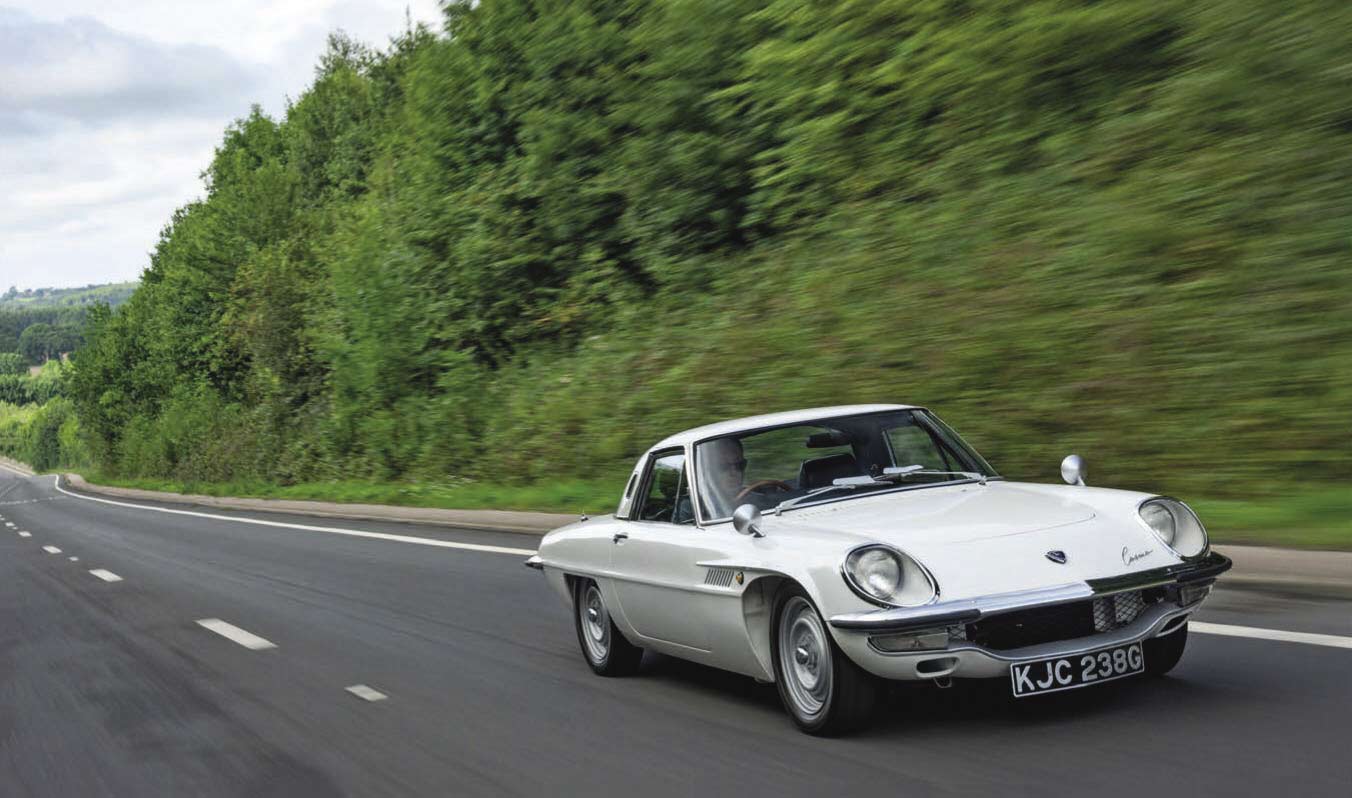

TECHNICAL DATA FILE SPECIFICATIONS MAZDA COSMO 110S
Sold/number built 1967-’1972/1206 (including 30 pre-production cars)
Engine two-chamber 982cc rotary, with twin sparkplugs per chamber and Hitachi-Stromberg four-barrel carburettor
Max power 128bhp @ 7500rpm / DIN
Max torque 96lb ft @ 3500rpm / DIN
Transmission four-speed manual, RWD
Suspension: front independent, by wishbones, coil springs, anti-roll bar rear live axle, de Dion tube, trailing arms, semi-elliptic leaf springs; telescopics f/r
Steering rack and pinion
Brakes discs front, drums rear, with servo
Weight 2182lb (990kg)
0-60mph 9.9 secs
Top speed 116mph
Mpg 22.6
Price new n/a
Price now £80,000
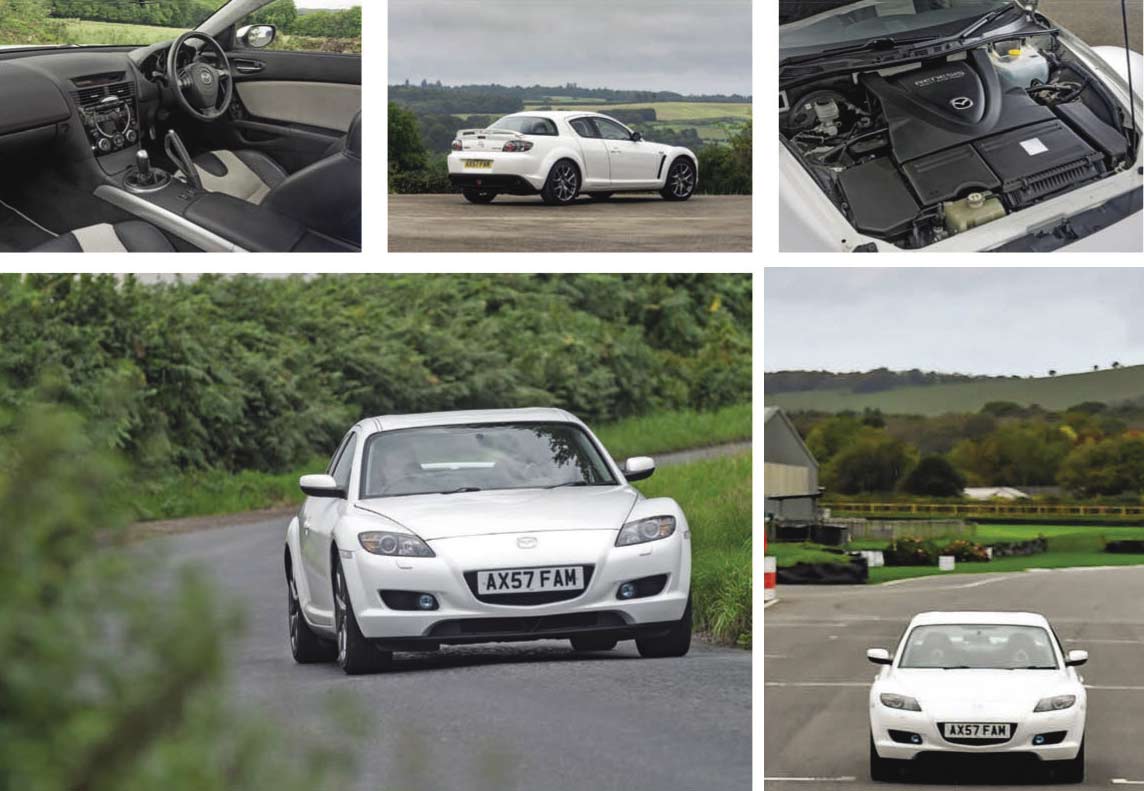
‘RX-8s CAN BE SIDEWAYS IN THE WET, BUT IN THIS COMPANY THE COUPÉ IS THE SENSIBLE ONE’
TECHNICAL DATA FILE SPECIFICATIONS MAZDA RX-8
Sold/number built 2003-’2012/192,094
Engine naturally aspirated 1308cc two-chamber rotary, with electronic fuel injection
Max power 217bhp @ 7450rpm / DIN
Max torque 159lb ft @ 5500rpm / DIN
Transmission six-speed manual, driving rear wheels
Suspension independent, at front by double wishbones, anti-roll bar rear multi-link, anti-roll bar; telescopic dampers f/r
Steering power-assisted rack-and-pinion, 2.5 turns lock-to-lock
Brakes all ventilated discs, with servo and anti-lock
Weight 2976lb (1350kg)
0-60mph 6.8 secs
Top speed 140mph
Mpg 19.3
Price new £25,785
Price now £6500
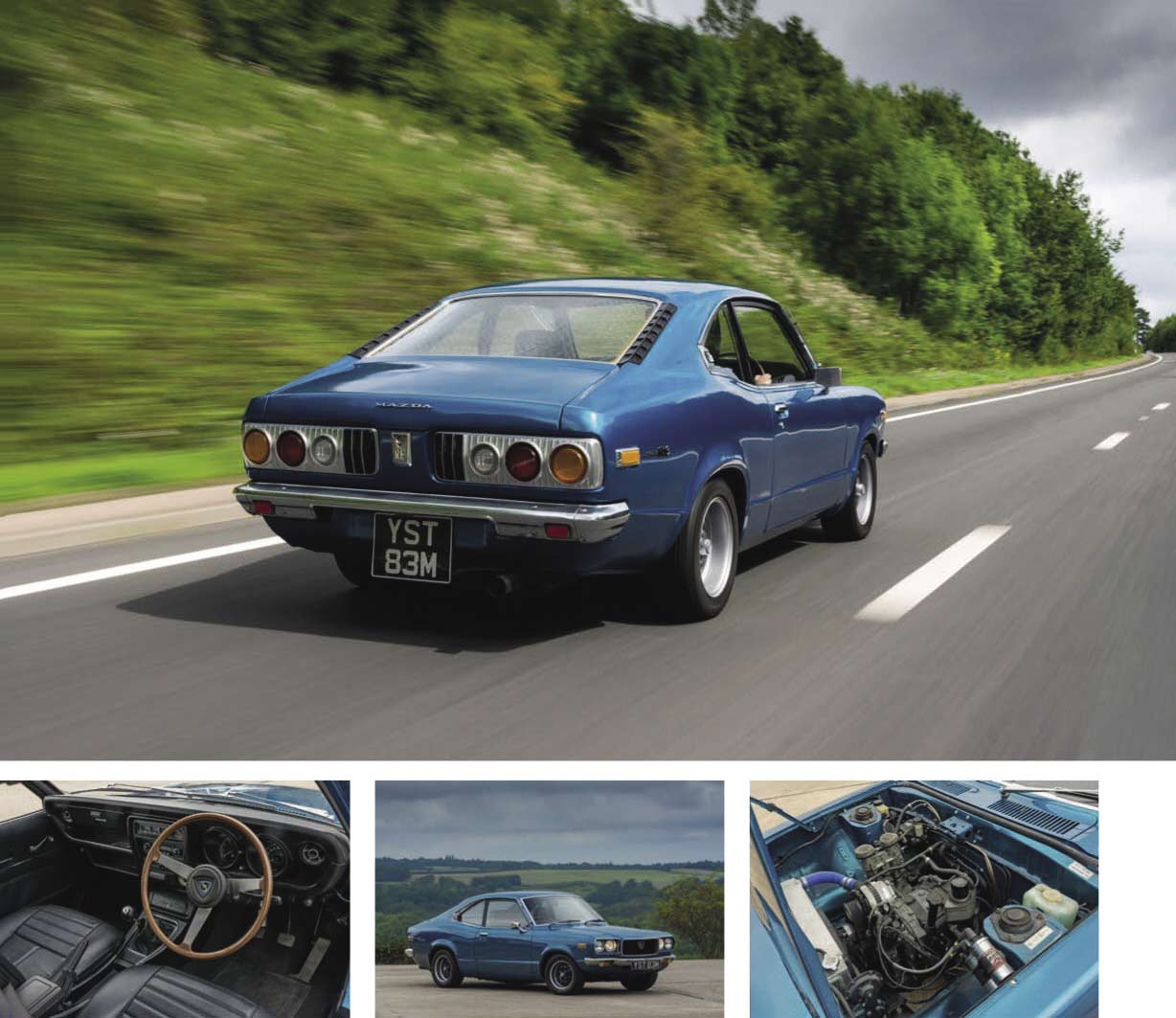
‘THERE IS MORE THAN A TOUCH OF SHRUNKEN CHEVELLE ABOUT THIS LITTLE TWO-DOOR’
TECHNICAL DATA FILE SPECIFICATIONS MAZDA RX-3
Sold/number built 1971-’1978/286,685
Engine two-chamber 982cc 10A rotary (later 1146cc 12A), with twin sparkplugs per chamber and four-barrel carburettor
Max power 108bhp @ 7000rpm / DIN
Max torque 100lb ft @ 4000rpm / DIN
Transmission four-speed manual, RWD
Suspension: front independent, by MacPherson struts, anti-roll bar rear live axle, leaf springs; telescopic dampers f/r
Steering recirculating ball
Brakes discs front, drums rear, with servo
Weight 2060lb (934kg)
0-60mph 10.9 secs
Top speed 112mph
Mpg 20.8
Price new n/a
Price now £5-10,000

‘SIGHTING BETWEEN THE EVOCATIVE POP-UP LIGHTS, YOU EASILY KEEP UP WITH MODERNS’
TECHNICAL DATA FILE SPECIFICATIONS MAZDA RX-7 MkI
Sold/number built 1978-’1985/471,018
Engine two-chamber 1146cc 12A rotary, with twin sparkplugs per chamber and four-barrel carburettor
Max power 108bhp @ 7000rpm / DIN
Max torque 109lb ft @ 4000rpm / DIN
Transmission five-speed manual, RWD
Suspension: front indepedent, by MacPherson struts rear live axle with four links, Watt linkage, coil springs; anti-roll bar, telescopic dampers f/r
Steering rack and pinion, 3.5 turns lock-to-lock
Brakes ventilated discs front, drums rear, with servo
Weight 2512lb (1139kg)
0-60mph 9 secs
Top speed 115mph
Mpg 18.2
Price new £8549
Price now £6-9000
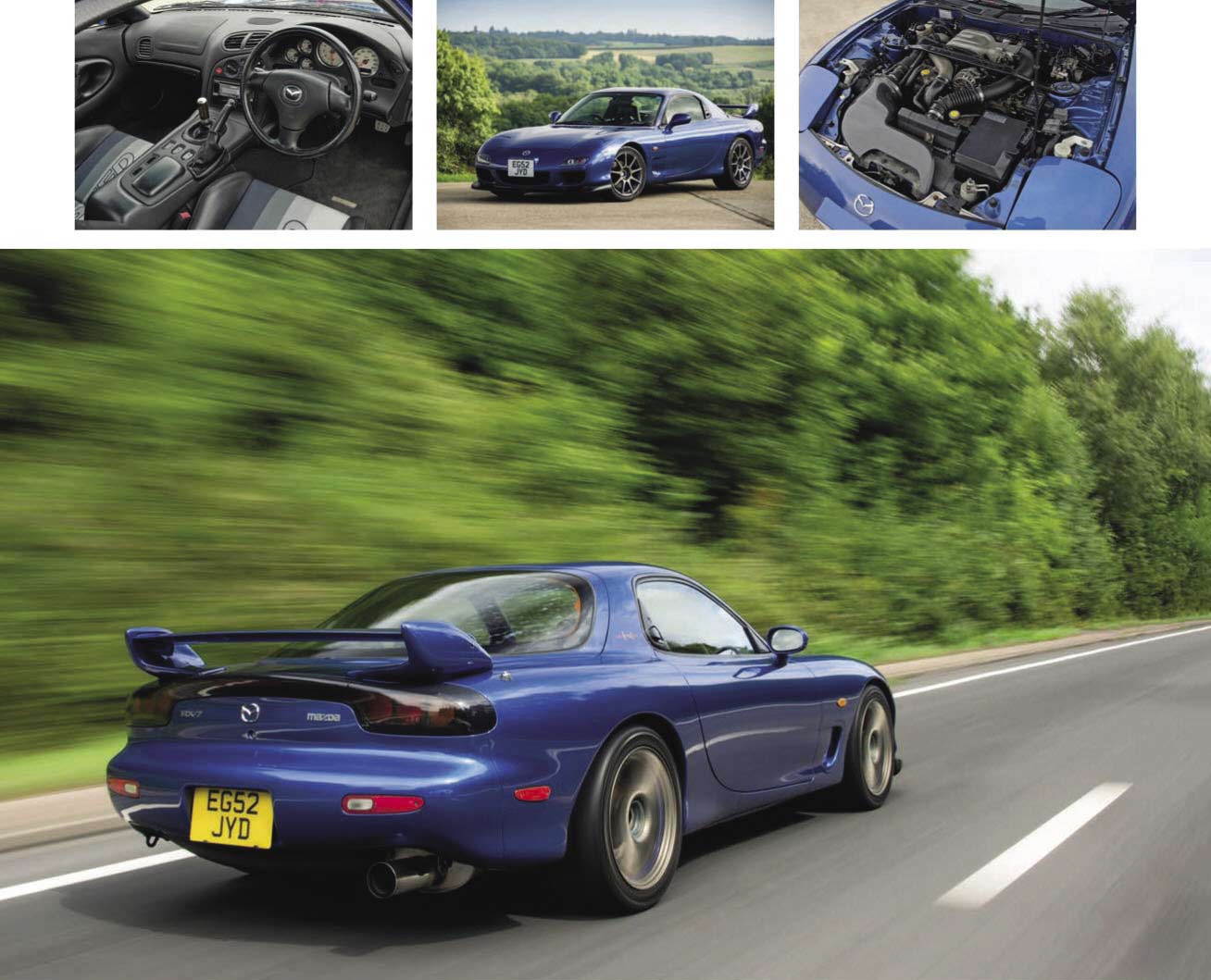
TECHNICAL DATA FILE SPECIFICATIONS MAZDA RX-7 MkIII BATHURST
Sold/number built 2002/500
Engine two-chamber 1308cc 13B rotary, with electronic fuel injection and twin Hitachi turbochargers
Max power 276bhp @ 6500rpm / DIN
Max torque 217lb ft @ 5000rpm / DIN
Transmission five-speed manual, RWD
Suspension independent, by double wishbones, coil springs, telescopic dampers, anti-roll bar
Steering power-assisted rack-and-pinion, 2.9 turns lock-to-lock
Brakes ventilated discs, with servo and anti-lock
Weight 2777lb (1260kg)
0-60mph 4.5 secs
Top speed 160mph
Mpg n/a
Price new n/a
Price now £10-12,000





